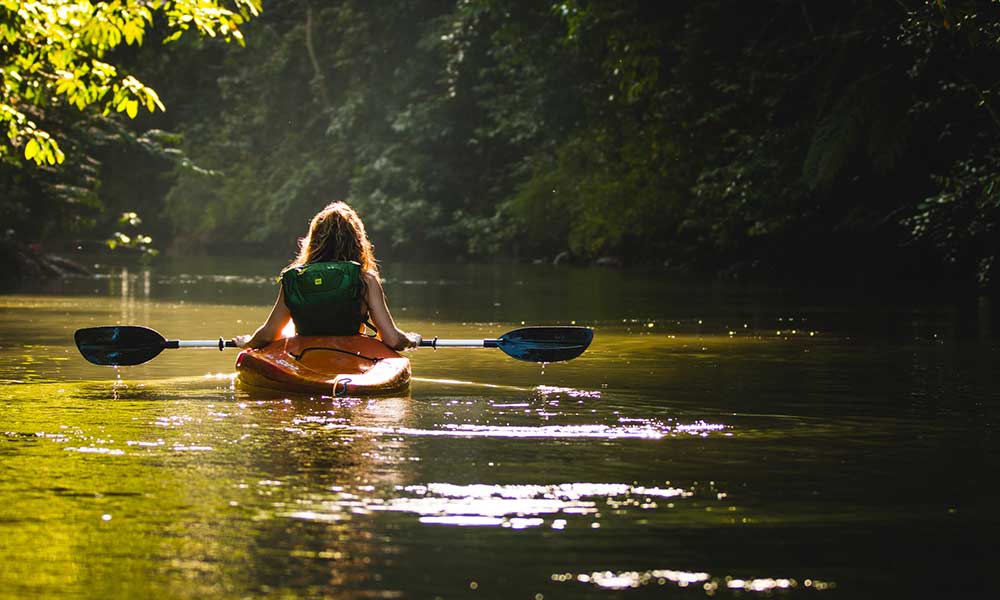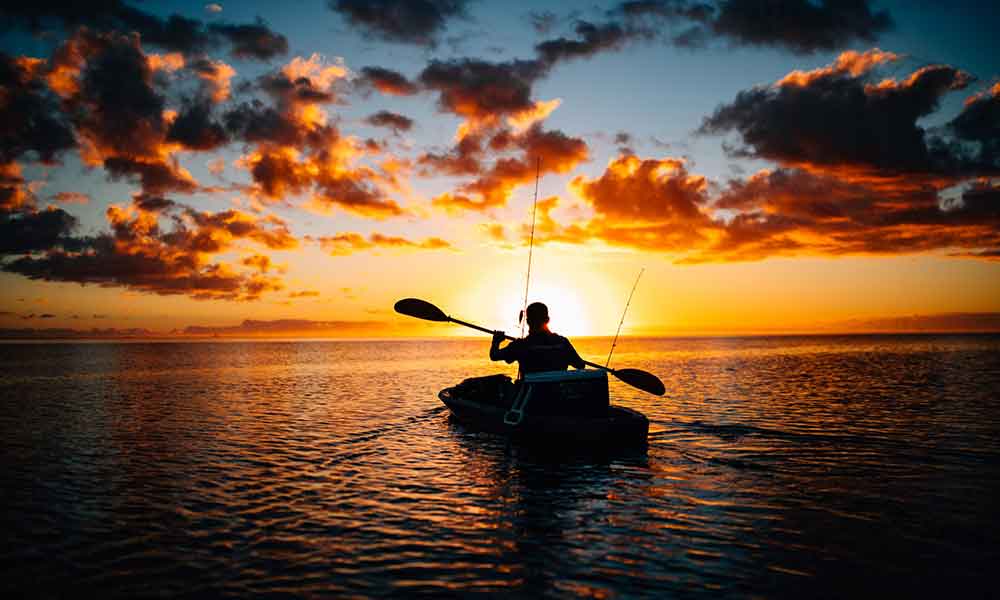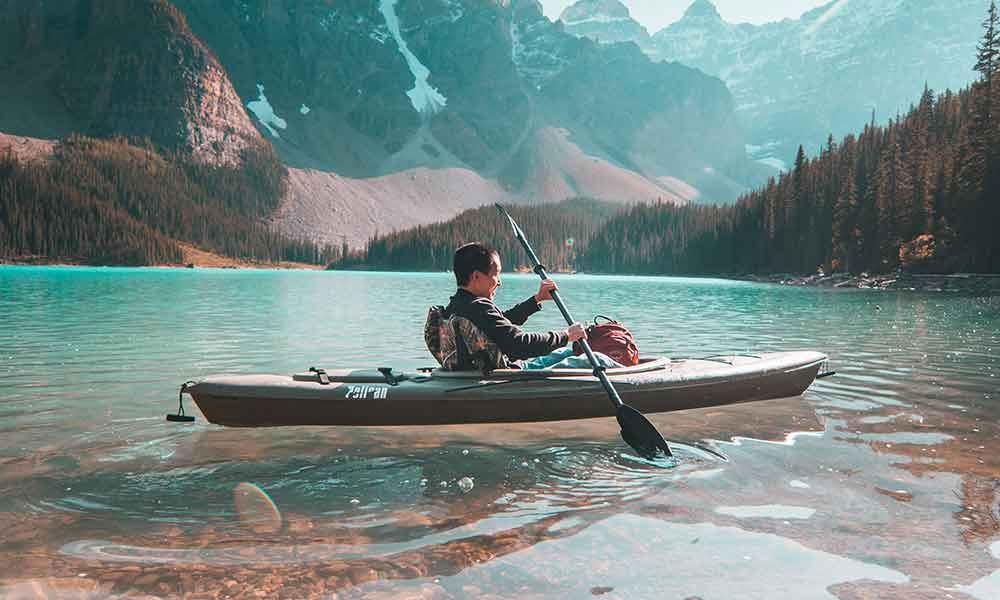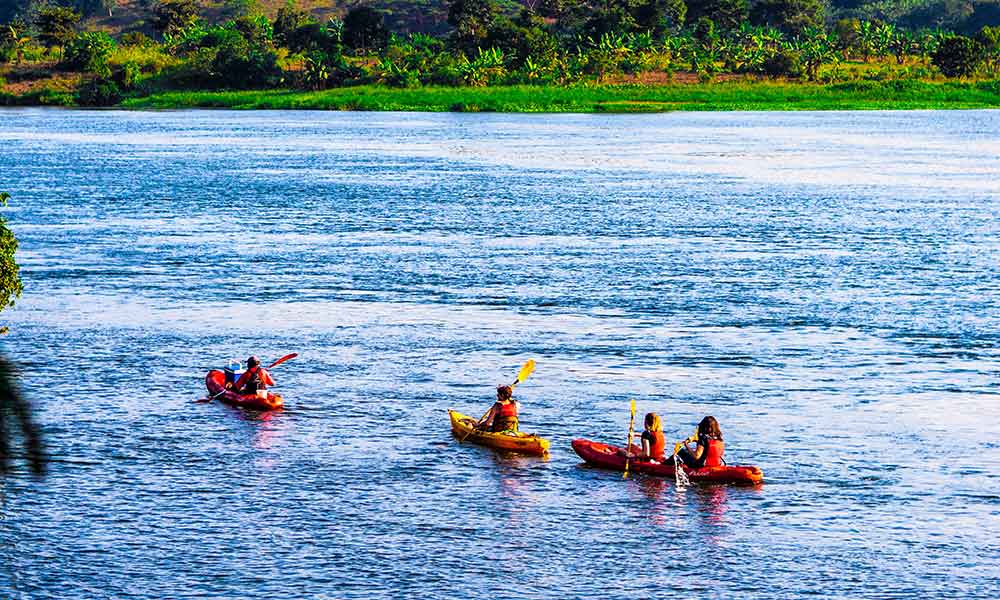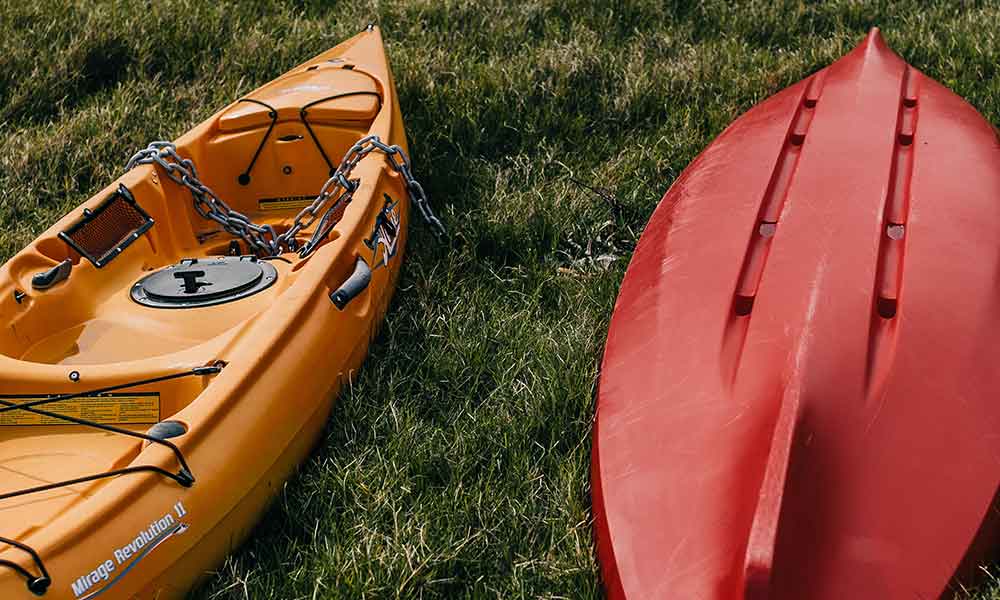The greatest concern for most beginner kayakers is the kayak flipping over. This raises the question about kayaks’ stability and whether flipping over is a common experience when kayaking. Kayaking is a water sport, which means at some point you are going to get wet, but there is a difference between getting wet and receiving a dunking in the water. We have some insight for new kayakers on how to avoid this.
Some kayaks flip over easily, while others are stable in the water and do not flip over easily at all. The aspects of the kayak that contribute to stability or instability in the water are the width of the kayak and the hull shape. The purpose of the kayak also affects the stability in the water.
There are various aspects of kayak design that influence the craft’s stability in the water. Some kayaks are intentionally designed to be unstable in order to accentuate other required characteristics of the boat. We will explain these so you can select the most appropriate stability-level kayak for your needs.
Are Kayaks Stable In The Water?
The kayak’s stability in the water is a common concern among new kayakers. While this is a valid concern, it should not be the primary focus when learning to kayak.
Some kayaks are stable in the water and do not flip over easily, but others are very unstable, and it takes a while to learn the balance skills required to keep the kayak upright.
Depending on the kayaking you are learning, the kayak intended for this purpose may be inherently unstable! If you are paranoid about the kayak tipping over and spilling you into the water, your nervousness about this is likely to make it happen.
The main types of kayaks and their relative stability include the following.
- Recreational kayaks. These kayaks are generally wide, fairly flat bottomed, and are very stable.
- Fishing kayaks. Fishing from a kayak requires a stable platform from which to cast and fight a fish to land it. These kayaks are usually very stable and do not flip easily.
- Racing kayaks. These kayaks are built for speed and are the most unstable of all the kayaks. They flip over very easily in the water.
- Sea kayaks and touring kayaks. These kayaks are built to withstand the rigors of ocean kayaking and are fairly stable. However, it is possible for them to flip in the ocean swells and waves.
- Whitewater kayaks. These kayaks are wide, have a flat bottom, and are built to be very stable in rough water. Due to the conditions these kayaks are used in, they can flip over fairly easily in rough water.
Within each kayak category, there are some boats built to be more stable than others, mostly with the beginner kayaker in mind. We will cover the features to look out for on a kayak that will affect its stability, so you can select the correct kayak for your skill level.
While it is good to look for a stable kayak as a beginner, especially if you need a stable kayak for your intended purpose, there needs to be a caveat to this strategy.
A kayak flipping over is a possibility that every kayaker could face at some point. Knowing what to do when a kayak flips and how to right the craft and get back on board is a skill that must be learned early in your kayak training.
How will you learn the recovery process to save yourself and your kayak if you never fall out of your kayak?
Factors Affecting Kayak Stability
Many factors affect the kayak’s stability, from hull design to environmental factors and kayaking techniques.
Kayak Hull Design Affecting Stability
The kayak’s hull design is the most important factor affecting whether it will flip over easily or not. The hull design has two main features that determine the stability of the kayak; hull shape and hull width.
Regarding kayak hull design, you will hear two terms mentioned relating to stability. Primary or initial stability and secondary stability.
Primary stability is the ability of a vessel to recover from small-angle deviations laterally. Secondary stability is the vessel’s ability to recover from large lateral angle deviations from its centerline.
The secondary stability is the factor that will determine whether your kayak flips over or recovers. Round, narrow hulls, the norm in racing kayaks, have very little secondary stability and flip over easily.
Once the kayak leans to one side, it very quickly gets to the point of no return due to the narrow, rounded hull. You need to be practiced in various skills to recover from this type of potential rollover.
Kayaks with a flatter, wider hull have better secondary stability and do not flip over easily at all. Some designs, such as fishing kayaks, are so stable that the angler can stand on the kayak quite comfortably to fish.
If you are need a stable kayak in any style, a kayak with a less rounded hull and a wider hull will be your best option.
Environmental Factors Affecting Kayak Stability
Kayaking is an activity undertaken outdoors in the natural environment, which is part of the attraction for many people.
However, the natural elements we enjoy in the sport can influence the stability of any kayak. Rough water, winds, and swells can catch any kayaker unawares, resulting in the kayak flipping over.
Wind and swells coming from the side can flip any kayak over, even stable kayaks. This is why you should either have the wind in your face or at your back in windy conditions.
A large swell from the side can also flip a kayak to keel the nose or tail of the kayak pointing into the swells.
It is not only in the sea where these conditions can arise. Winds and storms can quickly pick up over the open water of lakes and dams, and before you know it, you are battling the weather to get to shore!
Since it is possible for any kayak, stable or otherwise, to get flipped over in these conditions, we recommend that every kayaker learn recovery techniques for this type of event.
If your kayak flips a long way from shore, you don’t want to have to swim the rest of the way, so kayaking and self-recovery is an important skill for any kayaker!
Kayaking Techniques Affecting Stability
Until you gain some experience in the water, you may be the cause of the kayak flipping over. Avoiding these events only comes with practice or guidance from other more advanced kayakers.
One of the most common causes of a kayak flipping over is the kayaker leaning to one side to retrieve an item from the water. This could be a piece of gear that has fallen overboard, such as a paddle or a fishing rod, or even your hat.
Fishing kayaks are stable boats, but they can also be flipped by the kayaker’s mistakes. Anchoring the kayak from the side rather than the stern or the bow is a sure way to get the current in the river to flip your kayak! A fish on the line can swim under your kayak and flip you over if you do not take corrective action.
Uneven weight distribution in your kayak can also result in it flipping over. Stow your gear in your kayak in a way that distributes the weight evenly both laterally and fore and aft.
You can learn kayaking techniques that will help you prevent the kayak from flipping over. Every kayaker should become familiar with techniques such as bracing with the paddle and swiveling your hips.
Conclusion
Most kayaks do not flip over easily, but this is no guarantee that you will never face this event. It is important that every kayaker practice for this possibility by learning techniques to prevent a rollover and how to recover after a rollover event in a kayak.
Beginner kayakers should select the most stable kayak possible to start out while they learn the skills required to kayak, and as with any activity, the more you practice, the better you will become. This also means knowing the limitations of your kayak and your skills and learning to read the environment for dangerous conditions.

